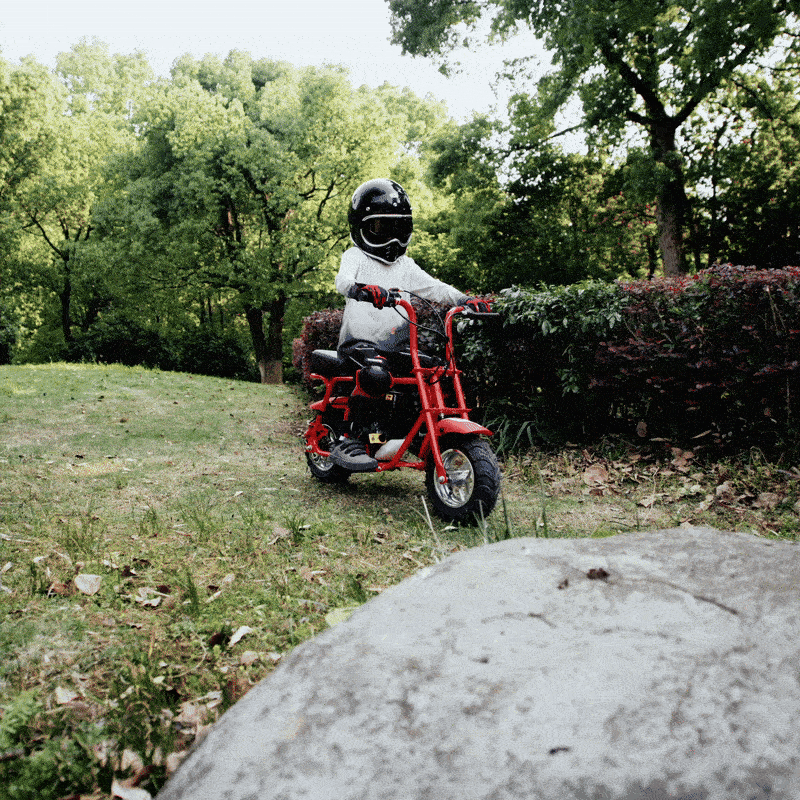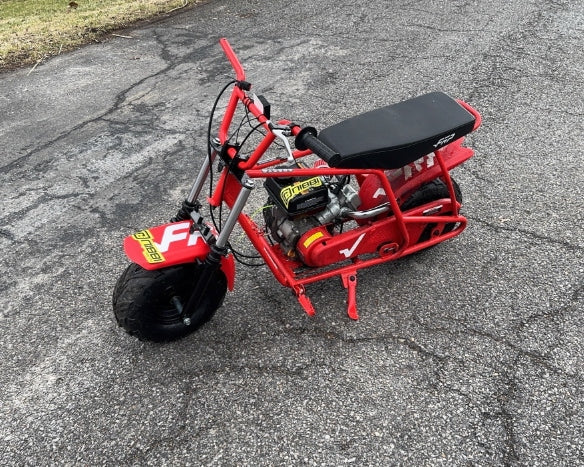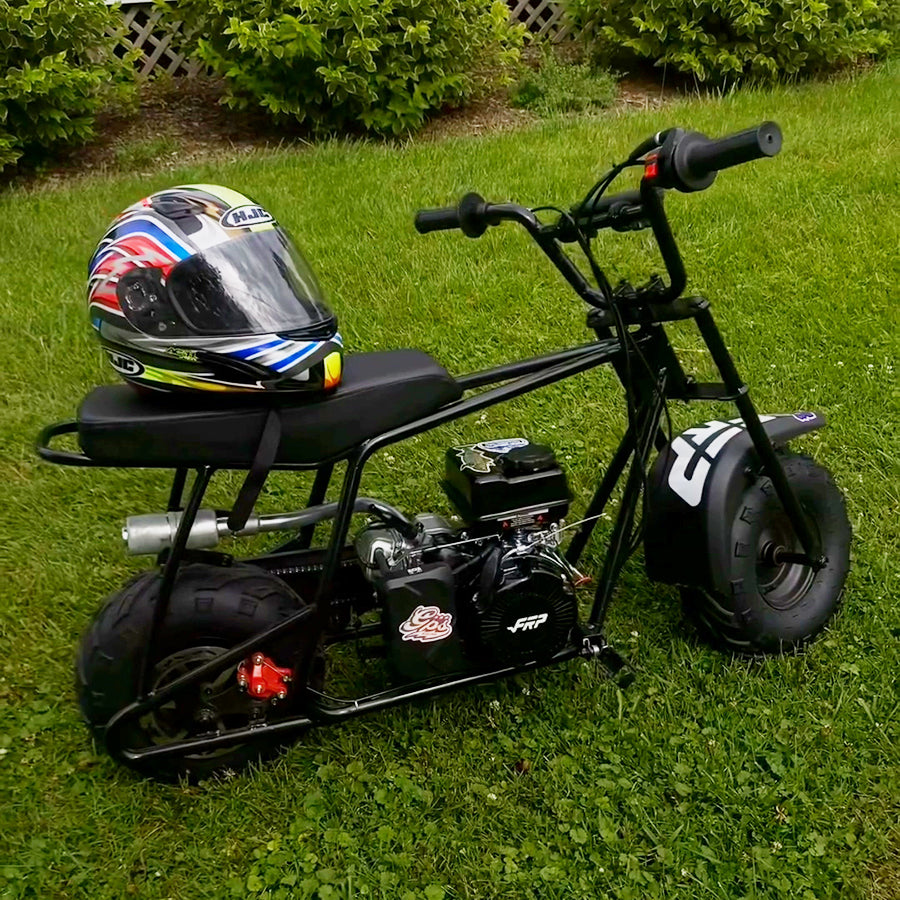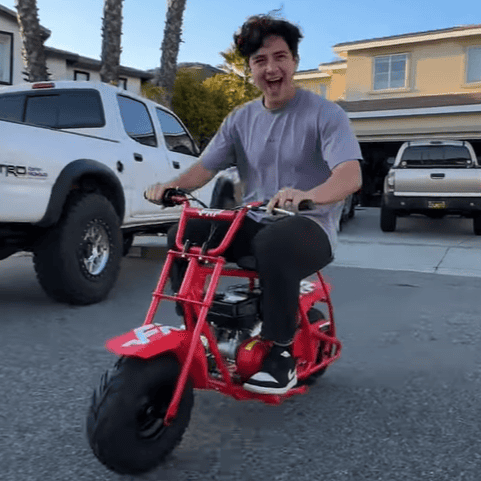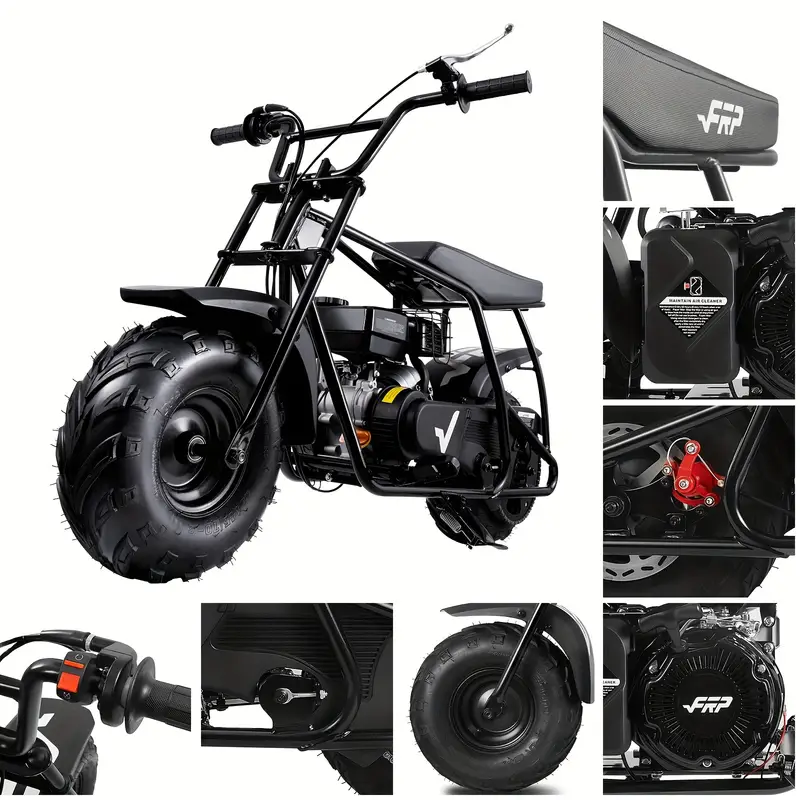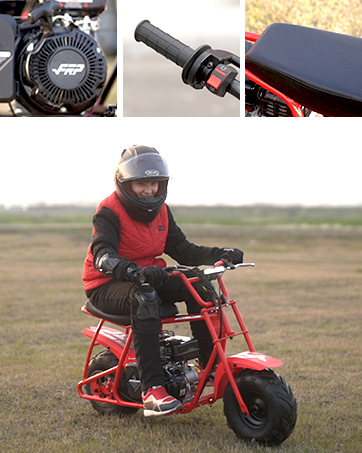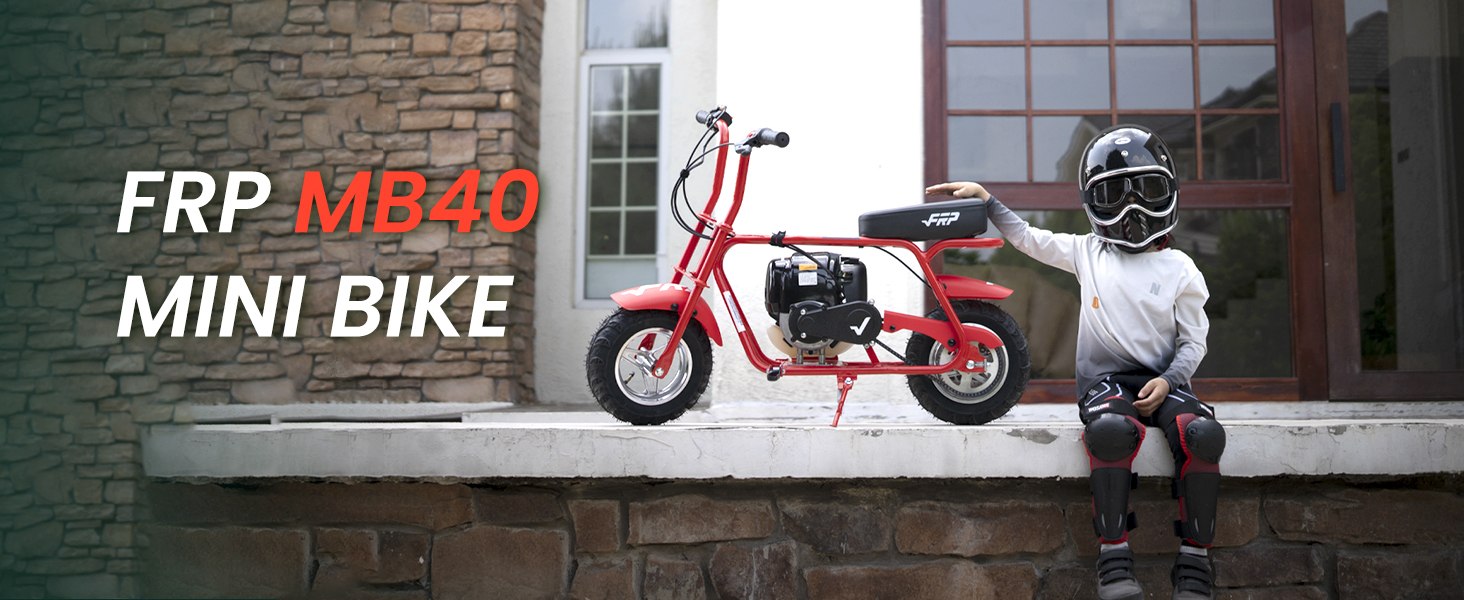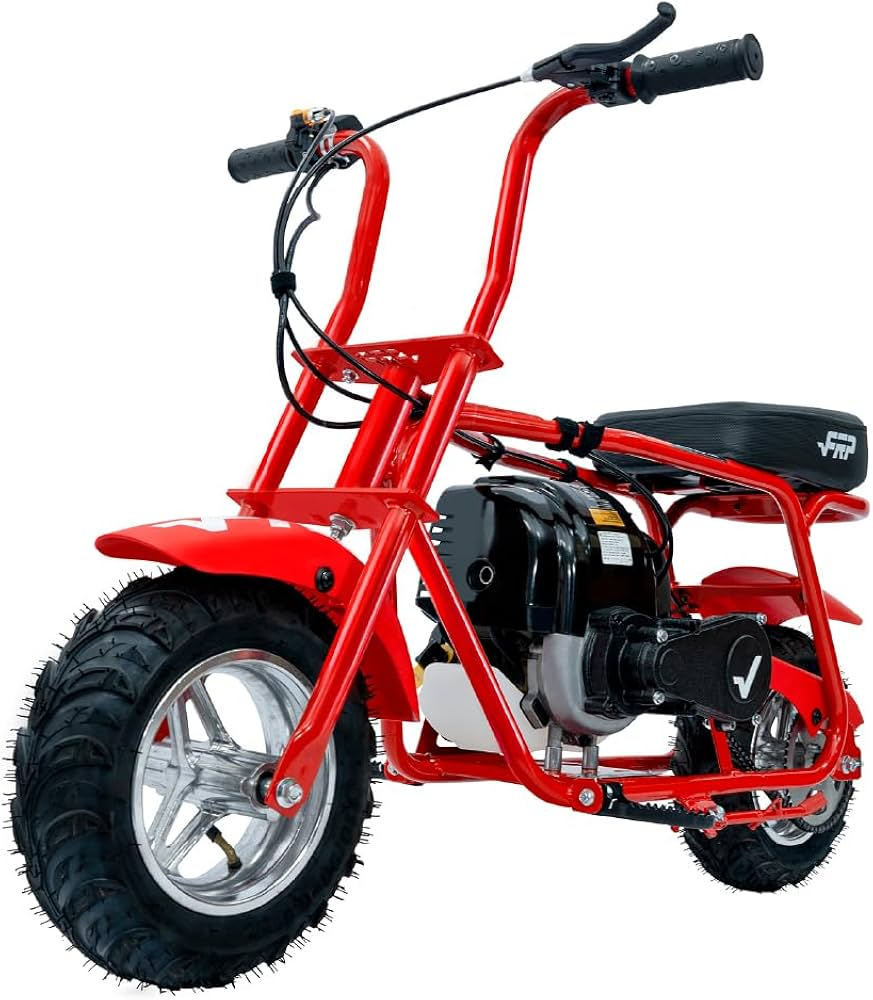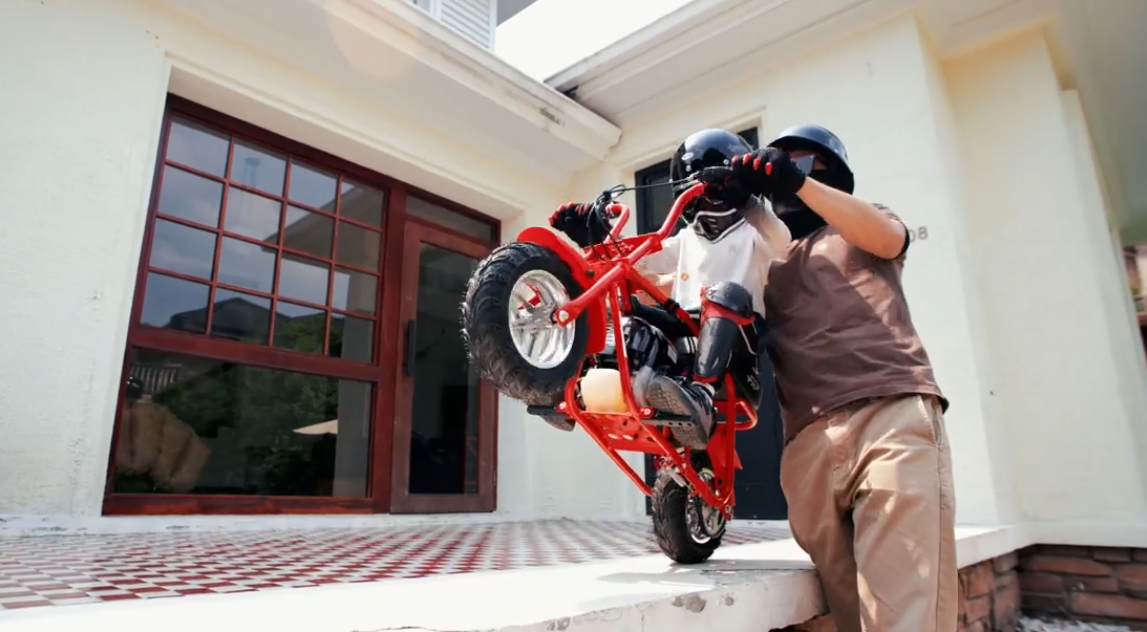“What’s the right age to start riding a mini bike?” It’s a question every parent asks. Mini bikes are exciting, fun, and a great way for kids to explore the outdoors. But when is the right time to let them start?
Let’s break down everything—from legal age rules to physical readiness. We’ll cover safety, emotional maturity, and the features of the best starter bikes, like a 40cc dirt bike or a 50cc dirt bike.
This guide will help you decide when your child is ready and how to start safely.
Legal Age Requirements
State-by-State Regulations
Every state has different rules. In some states, kids can ride off-road bikes as young as 6. Others require riders to be 12 or older. Before buying a mini bike, check your local laws.
Many states require a special permit or off-road license for kids riding on trails or public land. Rules are often more relaxed for riding on private property.
Age verification might be required at state parks. Some states ask for a birth certificate or ID. In most cases, kids under 18 need written parental consent. This helps ensure safety and legal protection.

Safety Standards
Experts suggest waiting until your child is at least 7 before riding alone. Some 40cc dirt bike models are made for kids aged 6–10, but always check the label.
Bike makers also list age ranges for each model. Due to the extra power, a 50cc dirt bike may be better suited for riders 8 and up.
Insurance is another factor. Some companies require riders to be a certain age for coverage. Ask your provider about age limits if you plan to insure the bike.
Training is often a must. Many parks won’t allow young riders without a safety course. These programs teach basic handling and safety practices.
Physical Readiness Assessment
Height and Weight Considerations
Your child should be able to touch the ground with both feet. If not, the mini bike may be too tall. Even a low-seat 40cc dirt bike can be too big if your child is under 3.5 feet tall.
Most bikes have weight limits. A 50cc dirt bike may hold up to 150 pounds. A smaller mini bike for adults often supports more. Always check specs to avoid tipping or loss of control.
Strength matters too. Your child must control the bike during turns, braking, and stops. If they struggle to lift or move the bike, it’s too early.
Good balance is key. Riding a mini bike requires solid coordination, especially when starting or turning. If your child can ride a bicycle without help, that’s a good sign.
Developmental Milestones
Fine motor skills help control the throttle and brakes. If your child can hold a pencil steadily and ride a pedal bike, they’re likely ready.
Reaction time is vital. Bikes move fast, and your child must react to obstacles or sudden stops in seconds.
They also need spatial awareness. Riding means knowing what’s around them. Can they safely judge space when biking or playing sports?
Look for signs of physical maturity. Stronger muscles and better posture help control the bike. These signs show your child is developing the control they need.
Cognitive and Emotional Readiness
Decision-Making Skills
Can your child assess risk? For example, would they avoid a steep hill or sharp turn?
They must understand basic safety, and wearing a helmet and gear should be second nature and not optional.
Listening is critical. If they ignore simple instructions, they may not follow riding rules. A safe rider must remember and obey traffic or trail rules.
Problem-solving is also key. What will your child do if the bike stalls? Can they stay calm and ask for help?
Emotional Maturity
Mini bike riding comes with pressure. Your child may face loud sounds, rough rides, or minor falls. They must stay calm and not panic.
Frustration can show up quickly. Riding is fun, but there’s a learning curve. Can they try again after falling or stalling?
Understanding consequences matters. A wrong turn or ignoring safety rules can cause injury. They must see that their actions have effects.
Responsibility is huge. Will they help clean the bike, check the tires, or wear their helmets without being told?

The MB40: A Perfect Starter Bike
Age-Appropriate Design
The MB40 features a 38cc 4-stroke engine. It’s smaller than a standard 50cc dirt bike but still offers steady power. That makes it perfect for beginners.
It has a top speed of 18 mph. This allows kids to enjoy the ride without going too fast. It’s thrilling but not scary.
Its 165-pound capacity means your child can grow with it. Unlike some models, this mini bike can handle growth spurts.
The bike weighs just 46.3 pounds, making it easy to control. Even younger kids can push it around safely.
Safety Features
An emergency kill switch shuts the engine off instantly if something goes wrong. That’s a major plus.
The engine guard protects little legs from hot metal. It adds an extra layer of safety.
A rear disc brake ensures smooth and reliable stopping. Your child can stop fast, even on rough ground.
The frame is sturdy and well-balanced. This gives beginners confidence and prevents wobbling.
Training and Supervision
Essential Skills Development
Start with basics like starting, stopping, and turning. Walk beside your child as they learn.
Teach clear safety routines. Always wear a helmet, gloves, and boots. Know how to check the gas and brakes before riding.
Introduce simple bike care. Let your child wipe it down or check tire pressure. It builds responsibility and connection.
Discuss emergency plans. What if the chain comes off? What if they fall? Knowing the answers helps your child feel ready.
Parental Involvement
Always supervise early rides. Watch from a distance, but be close enough to help. Use patient, calm teaching. Avoid shouting or rushing. Let your child learn at their own pace.
Track their growth. Are they braking smoothly? Turning safely? Each improvement is a milestone.
Reinforce safety often. Praise your child when they wear their gear or ride responsibly. Make safety a habit, not a rule.
Gradual Progression
Starting Small
Begin in your backyard or a flat, empty field. Avoid hills and rough terrain. Set low-speed goals and limit top speed for the first few rides.
Keep early rides short. Ten to fifteen minutes is enough at first. Use games to build skills. Set up cones or mark a small loop for practice.
Advancing Skills
Once your child rides well on flat ground, try grass, dirt, or gravel. Add new tasks like weaving around cones or going up gentle slopes.
Increase riding time slowly. Add five minutes per week if your child is improving. Teach more advanced tricks, like standing on foot pegs or shifting weight during turns.
Making the Decision
Readiness Checklist
Can your child touch the ground while seated? Can they lift or move the bike? Do they follow instructions? Understand safety gear? Stay focused for 15 minutes?
Are they excited to ride, but not reckless? Do they ask smart questions? Does your family support the idea? Are you ready to train, supervise, and support?
Next Steps
Pick a model based on size, not just age. A 40cc dirt bike may be best for smaller kids. A 50cc dirt bike might suit older or more confident riders.
Look into local training programs. Many parks offer weekend mini bike safety classes.
Invest in solid gear. Helmet, gloves, boots, chest guard—all are must-haves.
Make a riding schedule. Short daily rides build skill and confidence. Stick to the plan.
Conclusion
Understanding how old do you have to be to ride a mini bike takes more than guessing. It involves checking laws, measuring growth, and testing maturity.
Whether you choose a 40cc dirt bike for a beginner or a 50cc dirt bike for a more experienced rider, the decision should be informed, not rushed. Some bikes may say “mini bike for adults,” but they work great for older teens, too—just check the specs.
Start with safety. Build skills slowly. Watch your child grow into the adventure with joy and confidence.
For more legal guidance, check FRP.

